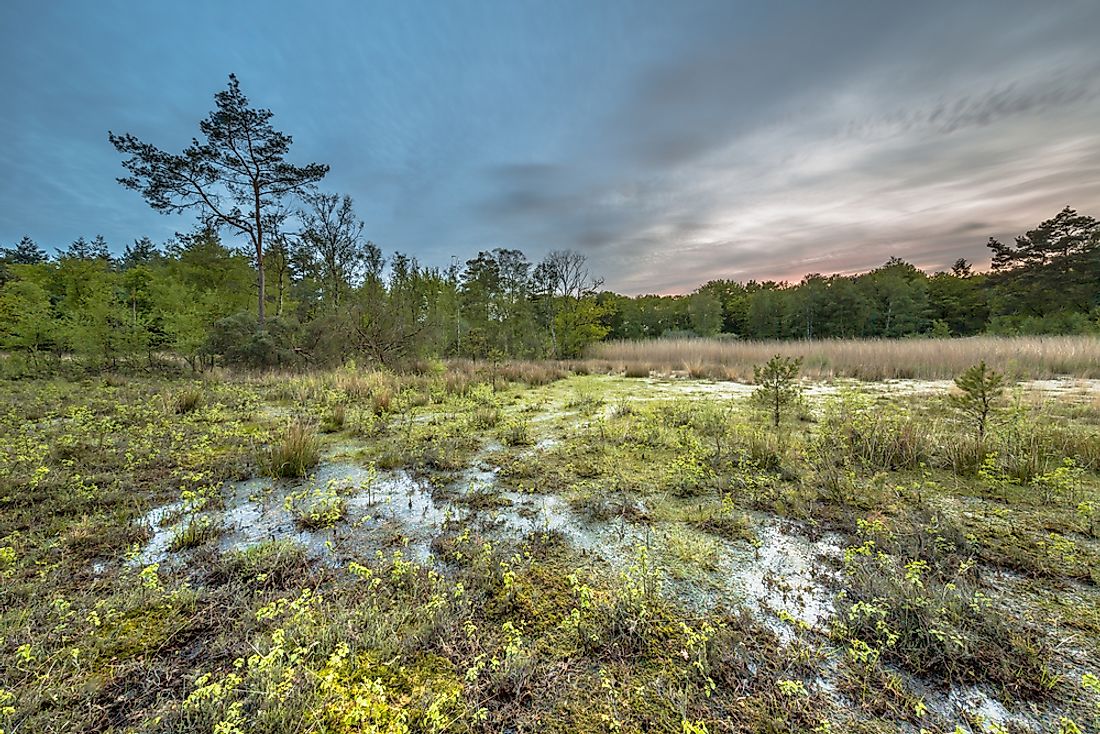Where is the North European Plain?

The North European Plain is a European region that covers Denmark, Poland, Germany, Belgium, Holland, and small parts of northern France and the Czech Republic. Some research accounts also include the southern United Kingdom, east Russia, Baltic States like Estonia, Latvia, Lithuania, and Belarus as part of this expansive plain. The North European plain also has lowly elevated plains tucked between the Central European Highlands on the south and on the coastlines of the Baltic Sea and North Sea to the north. The Baltic and the North Sea are divided by the North Jutland Peninsula which is also the nation of Denmark. The Great European Plain is formed where the North European Plain connects to the East European Plain. The Northern European Plain also occupies the territory under the Baltic Sea. Due to the plain's unique surface features, its geological structures are keenly studied by researchers.
Features
As part of the Great European Plain, the North European Plain lies below 500 feet in altitude, and has a relatively flat terrain. As a result, drainage is poor and frosty deposits cover much of the region and plain. The North European Plain also has several rivers like the Rhine, Oder, Weser, Elbe and Vistula. Along the Rhine River in the Netherlands, there is a well developed transport system, and a vibrant agricultural area making the area around it be densely populated. The plain is amongst the most fertile lands that are utilized for commercial farming in the world. There are also tiny farms strewn in the countryside of the North European Plains. The temperate climate and the average amount of rainfall in the North European Plain allows for growth of seasonal crops like maize, wheat, and rye. This makes the plain in the North European wheat belt region. Due to the plain’s fertility and flat terrain, it is among the most densely populated territories in Europe. The rivers that crisscross the North European Plain also draw in a large human population due to guaranteed water supply.
North European Plain Sub Regions
The North European Plain has sub-regions like the Baltic Lowland, Low Countries to the west of the region, Polish Plains which start at the Baltic Sea and extend to Sudetes along the Czech-Germany border, and the Carpathians that cover large parts of Romania. In the English territory, the North European plain covers the flat lands of East Anglia, the Fenlands, and Lincolnshire whose landscape partially mirrors that of the Netherlands.
History
As a whole, the North European plain was formed during the ice age and today its ice sustains the tundra vegetation. The Renaissance Period of 1300 to 1700 was the most vital period for the North European Plain. In this period, humanism ideology triggered Christianity to thrive and multiply. Popularity and importance of the arts in the Renaissance Period also exploded in this period. As a result, this time period also came to be referred as the Northern Renaissance by its populace.
Economy
Most of the economies of the countries along the North European Plain heavily rely on agriculture and wheat and barley as the main export products. Minerals mined like sulfur and silver are also major exports earners for countries along the North European Plain. The plain also has coal and iron ores and natural gas reserves which are mined to sustain the economies of countries along this vast plain. There also are public and private businesses thriving in countries along the North European Plain.











